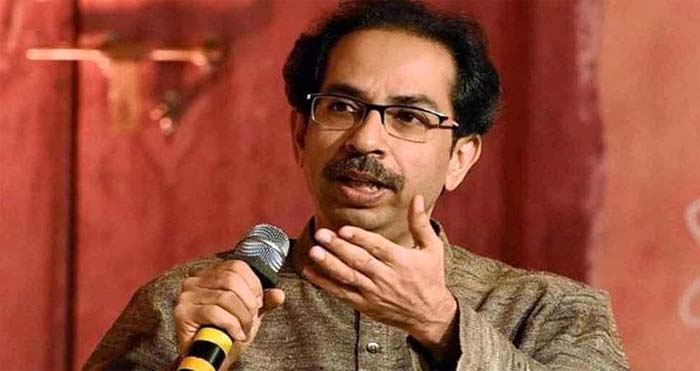Maharashtra is among the richest and most developed states of India on most parameters including healthcare. Still, it failed to contain spread of Covid-19. How did it happen?
Mumbai, May 14:
India had its first coronavirus case in January when three students returned home in Kerala from Chinese Covid-19 epicentre Wuhan. Then there was a hiatus.
India detected its first regular novel coronavirus cases on March 2 in Delhi and Hyderabad. Maharashtra got its first cases on March 9 in Pune. A couple had returned from UAE, already battling with Covid-19.
As on May 14 morning, India had a tally of coronavirus cases in excess of 78,000. Maharashtra accounted for one-third at almost 26,000. (All figures from Aarogya Setu app). Maharashtra had crossed 1,000-mark on April 7, roughly after one month of detecting the first Covid-19 case.
In another one month, Maharashtra was nearing 18,000 cases on May 7 with 694 deaths. Maharashtra has consistently reported over 1,000 new coronavirus cases every day over the last 10 days and deaths more than any other state.
Mumbai with around 15,750 novel coronavirus cases accounts for about 20 per cent of all India Covid-19 positive numbers. Fatality rate in Maharastra and particularly Mumbai has been unusually high.
At 1,000-mark, Covid-19 mortality rate for Maharashtra was over 6 per cent compared to all-India fatality of 3 per cent. It has come down significantly in the range of 3.75 per cent now compared to the national Covid-19 mortality rate of around 3.25 per cent.
Some data analysts have pointed out that if Maharashtra’s figures are taken out from India’s total coronavirus cases, the national Covid-19 mortality would come down below 3 per cent against the global fatality rate of around 6.75 per cent.
Coming down of fatality rate in Maharashtra is a good sign but it gets squared off from recent reports suggesting an unusually high positivity rate in coronavirus testing in its biggest hotspot, Mumbai. Some reports said the positivity rate in Mumbai has gone up to 33 per cent.
Authorities have explained this sudden surge in coronavirus positivity rate to targeted testing of suspects in containment areas. Overall, the coronavirus positivity rate in Mumbai is in the range of 11-12 per cent, which is much higher than the national average of around 4.25 per cent and Maharashtra’s 7 per cent.
The question that is often asked why Maharashtra and Mumbai – India’s most industrialised, developed and rich zone – failed to contain spread of coronavirus infection. Some point out to the fate of the US to dismiss the question.
However, in the hindsight, the authorities – both at the state and national levels – miscalculated the risk posed by novel coronavirus pandemic. The World Health Organisation (WHO) had declared Covid-19 a pandemic on March 11, only two days after Maharashtra recorded its first cases.
Everybody knew Covid-19 was a disease of foreign origin and could spread through human-to-human transmission. In simpler words, only a human could bring that disease to India or Maharashtra.
Over 42,000 international travellers land in Mumbai every day. The first few cases had come to Maharashtra from UAE. Yet, screening of passengers coming from UAE or some other coronavirus-hit countries did not begin till the third week of March, only days before India halted flight operations on March 22.
The disease was rampaging in many countries – the US, the UK and of the Gulf region – in February and early March. Mumbai waited for more than a week to begin thermal screening. Asymptomatic Covid-19 carriers were anyway entering into the crowds in Mumbai and Maharashtra but symptomatic ones could have been checked but for evidently late realisation by the authorities.
Another reason is cited for Maharashtra’s seemingly inept handling of Covid-19 spread over the past two months – the political inexperience of Chief Minister Uddhav Thackeray. But his Shiv Sena colleagues pointed to rising number of coronavirus cases under more experienced chief ministers to dismiss the charge.
The political opponents of Uddhav Thackeray charged that he failed to act in time and was more concerned about saving his chief ministerial post in the view of deferred election to Maharashtra Legislative Council. His telecon with Prime Minister Narendra Modi in April is said to have paved the way for the Election Commission announcing dates for MLC polls.
There is, however, another explanation to why Maharashtra and Mumbai have so high Covid-19 numbers. Ministers or BMC (Brihanmumbai Municipal Corporation) members have routinely linked it to, what they call, their more rigorous contact tracing and wide-scale testing for coronavirus infection.
Maharashtra has tested over 2.35 lakh samples for Covid-19 and is only behind Tamil Nadu (2.8 lakh). According to ICMR, India has tested about 19.5 lakh samples for Covid-19 as of May 14 morning.
Maharashtra’s argument that it tests more so it detects more coronavirus patients goes with the assessment that most Covid-19 patients are asymptomatic or show only mild symptoms. But then all states are testing only symptomatic patients or contact-traced individuals of confirmed Covid-19.




